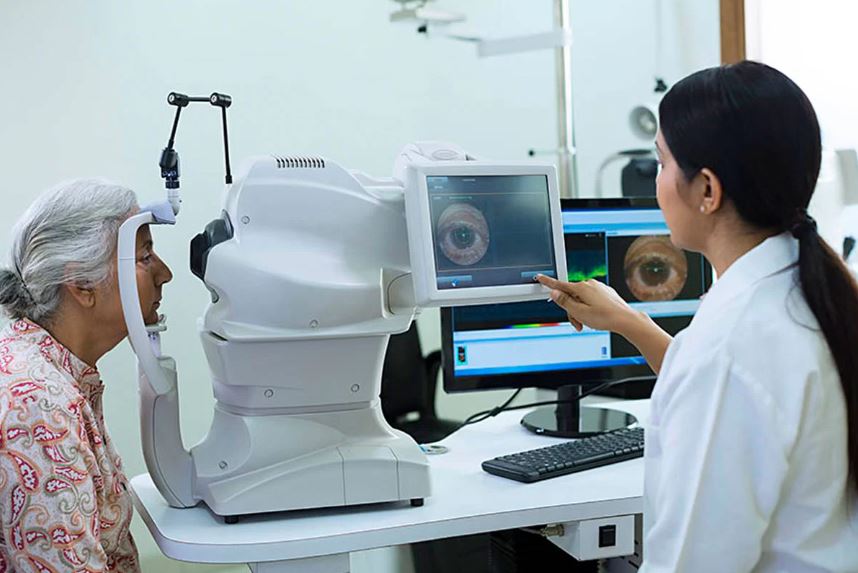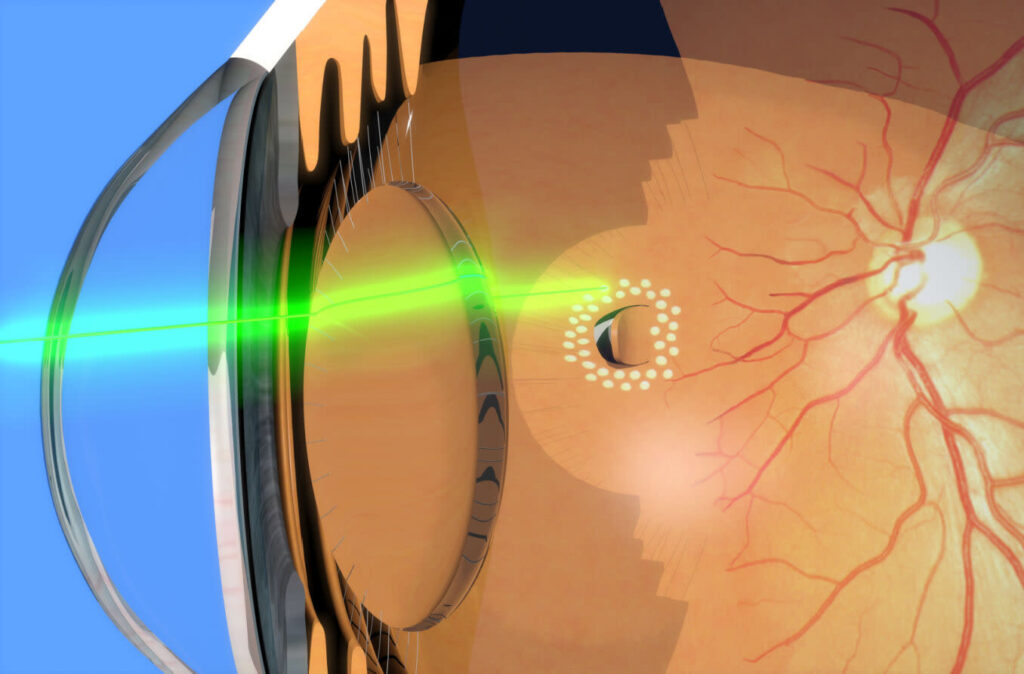The eye is a complex organ that plays a crucial role in our daily lives. At the center of this intricate system lies the retina, a thin layer of tissue located at the back of the eye. Understanding the importance of retinal health is key to maintaining good vision and overall eye health.
Understanding the Importance of Retinal Health
Vision is one of our most valuable senses, allowing us to navigate the world around us. The retina acts as a vital component in this process, converting light into electrical signals that the brain interprets as images. Without a healthy retinal treatments, our ability to see clearly and perceive the world becomes compromised.
The Role of the Retina in Vision
The retina consists of specialized cells called photoreceptors, which detect light and transmit visual information to the brain via the optic nerve. Two types of photoreceptors, rods, and cones, enable us to see in both dim and bright light conditions. The cones are responsible for color vision and detail, while rods excel at detecting movement and providing peripheral vision. You can visit https://mercychildrensclinic.org/safeguarding-your-vision-the-latest-breakthroughs-in-retinal-treatments for the latest breakthroughs in retinal treatments.
Common Retinal Diseases and Disorders
Unfortunately, the retina is susceptible to various diseases and disorders that can impact vision. Some common retinal conditions include age-related macular degeneration, diabetic retinopathy, retinal detachment, and retinitis pigmentosa. These conditions can cause vision loss or even blindness if left untreated.

Preventive Measures for Retinal Health
While some retinal conditions may be unavoidable, there are steps individuals can take to minimize their risk. Regular eye exams, a healthy diet rich in antioxidants, and maintaining optimal blood sugar levels for those with diabetes can all contribute to good retinal health. It is also essential to protect the eyes from harmful ultraviolet (UV) radiation by wearing sunglasses with UV protection.
In addition to these preventive measures, it is worth noting that certain lifestyle choices can also impact retinal health. For example, smoking has been linked to an increased risk of developing age-related macular degeneration. The chemicals present in tobacco smoke can damage the blood vessels in the retina, leading to vision problems over time.
Furthermore, it is important to be aware of the potential signs and symptoms of retinal diseases and disorders. These may include blurred or distorted vision, floaters or flashes of light, and a sudden loss of vision. If you experience any of these symptoms, it is crucial to seek immediate medical attention to prevent further damage to the retina.
The Evolution of Retinal Treatments
Over the years, advancements in medical technology and research have revolutionized the field of retinal treatments. Let’s take a closer look at how traditional methods have paved the way for state-of-the-art treatments.
Traditional Methods of Retinal Treatment
Prior to modern techniques, treatments for retinal diseases were limited in their effectiveness. Laser photocoagulation, a procedure that uses a high-energy laser to seal leaking blood vessels in the retina, was commonly used. While effective for some conditions, this method had limitations and often resulted in scarring or damage to healthy tissue.
Patients undergoing laser photocoagulation would often experience discomfort during the procedure, as the laser targeted the affected areas of the retina. The healing process could also be lengthy, with patients needing to protect their eyes and avoid strenuous activities for several weeks.
The Shift to Modern Retinal Treatments
In recent years, significant breakthroughs have been made in the field of retinal treatments. One such advancement is the introduction of anti-vascular endothelial growth factor (anti-VEGF) injections. These injections inhibit abnormal blood vessel growth, reducing the risk of vision loss in conditions such as age-related macular degeneration and diabetic retinopathy.
Unlike traditional methods, anti-VEGF injections offer a less invasive approach to treating retinal diseases. Patients receive the injections in a clinical setting, with minimal discomfort and a shorter recovery time. This has greatly improved the quality of life for individuals living with retinal conditions, allowing them to resume their daily activities more quickly.
The Impact of Technology on Retinal Treatments
Technological advancements have played a pivotal role in the development of state-of-the-art retinal treatments. Imaging techniques, such as optical coherence tomography (OCT), allow for precise diagnosis and monitoring of retinal conditions. This non-invasive imaging method provides detailed cross-sectional images of the retina, enabling healthcare professionals to accurately assess the extent of damage and plan appropriate treatment strategies.
Furthermore, surgical innovations, such as micro-incision vitrectomy, have improved surgical outcomes and reduced recovery time for patients. This minimally invasive procedure involves making tiny incisions in the eye, through which specialized instruments are inserted to remove scar tissue or repair retinal detachments. The use of smaller incisions not only reduces the risk of complications but also promotes faster healing and a quicker return to normal activities.
With ongoing research and technological advancements, the field of retinal treatments continues to evolve. These advancements hold promise for even more effective and efficient treatments in the future, offering hope to individuals affected by retinal diseases.

Exploring State-of-the-Art Retinal Treatments
The field of retinal treatments has made significant strides in recent years. Let’s dive into some of the cutting-edge treatments that are now available to patients.
Retinal diseases can have a profound impact on a person’s vision and quality of life. Fortunately, advancements in medical technology have led to the development of targeted and precise treatments that can help preserve retinal health and improve visual outcomes.
Laser Therapy for Retinal Diseases
Laser therapy has evolved to become a targeted and precise treatment option for various retinal diseases. Selective laser trabeculoplasty (SLT) is a technique that helps reduce intraocular pressure in glaucoma patients, thereby preserving retinal health. By using a specialized laser to target the trabecular meshwork, SLT stimulates the body’s natural healing response, improving the outflow of fluid from the eye and reducing pressure. This innovative approach has revolutionized the management of glaucoma, offering patients a non-invasive alternative to traditional surgical procedures.
Another remarkable application of laser therapy is photodynamic therapy (PDT). This treatment utilizes a light-activated drug to target abnormal blood vessels in the retina. By selectively destroying these vessels, PDT can effectively treat conditions such as age-related macular degeneration and certain types of diabetic retinopathy. The procedure involves injecting a photosensitive drug into the patient’s bloodstream, which then accumulates in the abnormal blood vessels. A low-intensity laser is then used to activate the drug, causing it to release a destructive agent that specifically targets and destroys the abnormal vessels. This precise and targeted approach minimizes damage to healthy tissue, making PDT an excellent option for patients with retinal diseases.
Vitrectomy: An Advanced Surgical Procedure
Vitrectomy has emerged as a highly effective surgical procedure for treating retinal conditions. This minimally invasive surgery involves removing the vitreous gel inside the eye and addressing any underlying retinal issues. The vitreous gel, which fills the space between the lens and the retina, can sometimes become clouded or filled with debris, causing visual disturbances. By removing the vitreous gel and replacing it with a clear saline solution, vitrectomy can restore clarity to the visual field and improve visual acuity.
In addition to addressing vitreous issues, vitrectomy is also used to treat various retinal conditions. For instance, in cases of retinal detachment, vitrectomy is often performed to reattach the detached retina and prevent permanent vision loss. Similarly, vitrectomy can be used to remove scar tissue or membranes that may be causing visual distortion in conditions like macular pucker. Furthermore, vitrectomy is a valuable tool in managing vitreous hemorrhage, a condition characterized by bleeding into the vitreous gel. By removing the blood and any associated debris, vitrectomy can help restore clear vision and prevent complications.
Intravitreal Injections and Implants
Intravitreal injections have become a mainstream treatment option for retinal diseases. By delivering medication directly into the vitreous cavity of the eye, these injections bypass systemic side effects and provide localized treatment. Medications commonly administered through intravitreal injections include anti-vascular endothelial growth factor (anti-VEGF) drugs, which help reduce abnormal blood vessel growth in conditions like wet age-related macular degeneration and diabetic retinopathy. These injections are typically performed in an office setting and are well-tolerated by patients.
Additionally, innovative retinal implants have shown promise in restoring partial or limited vision in patients with retinitis pigmentosa. One such implant is the Argus II, a device that consists of a tiny camera mounted on a pair of glasses, which captures visual information. This information is then wirelessly transmitted to an array of electrodes implanted in the retina. The electrodes stimulate the remaining healthy retinal cells, allowing the brain to perceive visual signals. While the vision provided by the Argus II may not be as clear or detailed as normal vision, it can significantly improve the quality of life for individuals with retinitis pigmentosa, enabling them to perform daily activities with greater independence.

The Future of Retinal Treatments
As technology continues to advance and research progresses, the future of retinal treatments holds great promise. Here are some exciting developments that may shape the field in the coming years.
Emerging Trends in Retinal Treatment
Gene therapy is one area of research showing significant potential in treating retinal diseases caused by genetic mutations. The ability to repair or replace faulty genes offers hope for conditions such as retinitis pigmentosa and Leber congenital amaurosis. Stem cell therapy is also an area of active exploration, with the hope of regenerating damaged retinal tissue.
Imagine a future where individuals with retinal diseases can receive personalized gene therapies that target the specific genetic mutations causing their condition. This level of precision medicine could revolutionize the field, offering tailored treatments that address the root cause of the disease. With advancements in gene editing technologies like CRISPR, scientists are inching closer to making this vision a reality.
The Role of Research in Advancing Retinal Treatments
Research plays a crucial role in driving innovation and improving retinal treatments. Ongoing studies aim to better understand the underlying causes of retinal diseases, develop more targeted therapies, and enhance surgical techniques. Collaborations between scientists, clinicians, and patients are essential for advancing the field and finding new solutions.
One exciting avenue of research involves exploring the potential of optogenetics in restoring vision. Optogenetics is a technique that uses light-sensitive proteins to stimulate retinal cells and bypass damaged photoreceptors. By introducing these proteins into the retina, researchers hope to create a new pathway for visual information to reach the brain, potentially restoring sight in individuals with certain types of retinal degenerative diseases.
Potential Breakthroughs in Retinal Health Care
With the rapid pace of technological advancement, there are several potential breakthroughs on the horizon. Artificial intelligence (AI) and machine learning algorithms have shown promise in diagnosing and predicting retinal diseases with a high level of accuracy. These algorithms can analyze large datasets of retinal images, identifying subtle changes that may indicate the presence of disease even before symptoms manifest.
Imagine a future where individuals can undergo routine retinal screenings using AI-powered devices that detect early signs of disease, allowing for timely intervention and treatment. This could significantly reduce the burden of vision loss and improve outcomes for patients.
In addition to AI, the use of nanotechnology in drug delivery systems may allow for more targeted and efficient treatments that minimize side effects. Nanoparticles can be engineered to carry therapeutic agents directly to the affected retinal cells, increasing drug efficacy and reducing the risk of systemic toxicity. This approach holds promise for conditions such as age-related macular degeneration and diabetic retinopathy.
In conclusion, retinal health is of utmost importance for maintaining good vision and overall eye health. With the evolution of state-of-the-art treatments, individuals facing retinal diseases or disorders have access to a range of innovative options. As technology continues to advance and research progresses, the future holds exciting possibilities for further advancements in retinal treatments. By prioritizing retinal health and staying informed about the latest developments, individuals can take proactive steps towards preserving their vision and enjoying a lifetime of clear sight.
